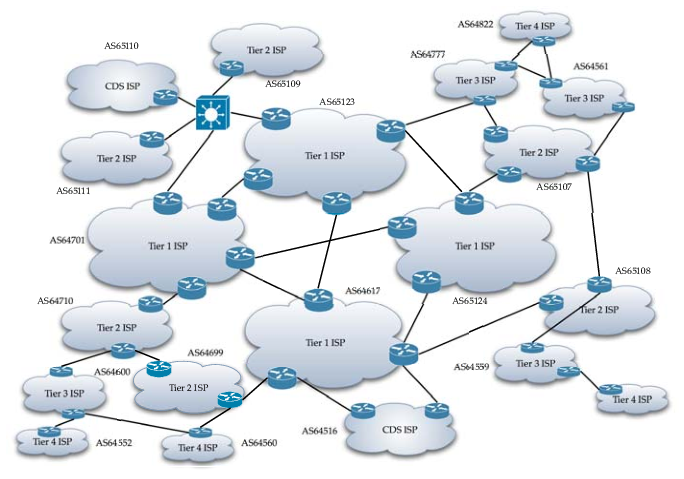ISP (Internet Service Provider)
Networking at ISP Level
Peering
Peering involves two IPSs coming together to exchange traffic with each other freely, and for mutual benefit.
- Normally, ISPs of competing size have peer-agreements in place, ensuring that all traffic is forwarded freely, since each ISP will make money from their customers anyway
Transit
Contrasted with Peering, this is when a bigger ISP charges a smaller ISP for the right to use its network in order to have access to the larger internet
An ISP is not necessarily a telecommunications company. In fact, it can be a university, or a private company providing internet access directly to its employees.
Tiers

Tier-1 ISP
- known as Internet Backbone networks.
- ex. Sprint, Verizon, AT&T etc.
- link speeds are often higher (sometimes as fast as 2.5-10 Gbps)
- They are directly connected to all other tier-1 ISPs
- They are connected to a large number of tier-2 ISPs
- They are international in coverage.
Tier-2 ISP
- usually have regional or national coverage
- connects to only a few of the tier-1 ISPs.
- routes traffic through one of the tier-1 ISPs to gain access to global internet.
- pay tier-1 ISPs for this right.